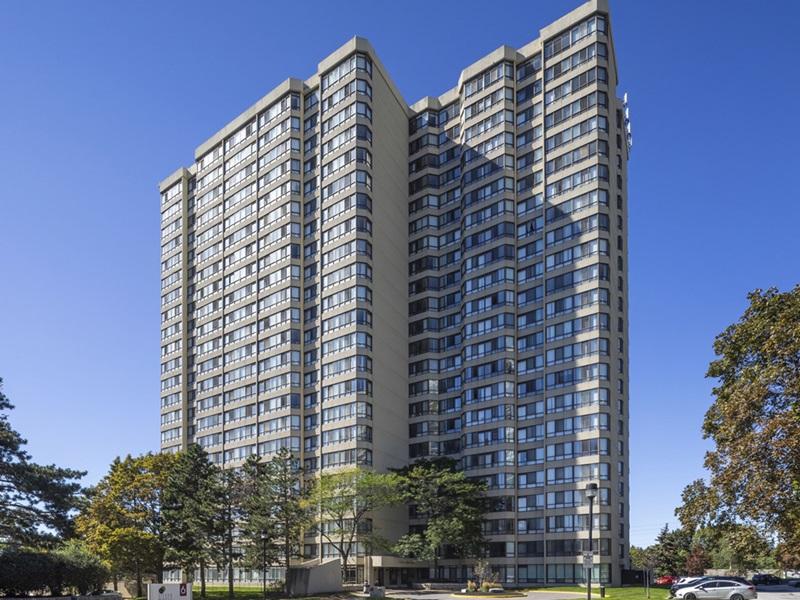
Higher interest rates continue to dampen enthusiasm for commercial real estate, both CBRE and Colliers note in second-quarter reports exploring cap rates and market conditions for different asset classes and markets across Canada.
Cap rates continued to trend higher across most major asset classes, with the national average all properties yield rising 16 basis points quarter-over-quarter to 6.28 per cent in Q2, according to CBRE's report.
While real estate spreads tightened quarter-over-quarter due to a rebound in bond yields, they’ve continued to widen and have risen 56 basis points over the past four quarters to 301 basis points, CBRE chairman Paul Morassutti wrote.
Overall Q2 commercial real estate investment activity was softer than expected.
Office, industrial and retail
Office investment remains muted due to uncertainty regarding people returning to offices and hesitancy from lenders, according to the Colliers report.
Class-AA, class-A and class-B office cap rates rose in the quarter, with downtown properties seeing a slightly larger increase than suburban product.
The cap rate spread between class-AA and class-A and class-B assets grew by a larger margin downtown than in the suburbs, where the spread held relatively steady.
While industrial leasing remains strong and it’s still a landlord’s market, the unprecedented leasing boom of the last few years — with 50 per cent-plus year-over-year rent growth in some markets — has tapered off.
Cap rates for both class-A and class-B industrial assets rose in the quarter, with class-A increasing at a higher rate.
Basic retail continues to perform extremely well despite inflationary pressures and interest rate hikes, with grocery-anchored retail attracting investors.
Retail redevelopment potential is becoming an increasingly important consideration for investors.
Intense pressure for more housing, combined with government decisions to loosen zoning in major markets, may introduce extra value for low-density assets such as suburban malls.
National retail cap rates across regional, power, neighbourhood, strip and urban street-front retail continued to rise, while strip (non-anchored) assets saw yields hold flat quarter-over-quarter.
Among the categories that saw cap rates rise, the yield expansion was relatively uniform with increases averaging 15 basis points quarter-over-quarter, according to CBRE.
Multifamily, seniors housing and hotels
Canada’s record-breaking population growth, combined with severely unaffordable home ownership, has buoyed the apartment investment market even in a high-interest-rate environment. Multifamily cap rates remain extremely low based on expectations of double-digit rent growth and strong investor demand.
Cap rates rose marginally, with yields holding steady across most markets. Relative to other asset classes, the national average cap rate for all multifamily categories rose at a much slower pace of four basis points quarter-over-quarter to 4.43 per cent, CBRE national apartment group vice-chairman David Montressor wrote.
Seniors housing investment activity in the quarter continued to be dominated by distressed assets and/or owners paired with buyers for whom the assets have strategic value. The sector continues to record meaningful rent growth that should minimize or eliminate interest rate effects on cap rates for well-positioned assets.
The lodging market is experiencing a surge, with many markets achieving new heights in average daily rates. Among the factors are the faster-than-expected return of leisure travellers and the utilization of hotels for refugees and social lodging.
Preliminary hotel investment volume in the first half of 2023 surpassed $900 million, significantly above the $550 million in the first half of 2022 and exceeding the $830 million in the first half of 2019.
Hotel cap rates held stable as upward pressure from underwriting higher debt costs is offset by hotel operating fundamentals outperforming annual budgets.
Vancouver and Victoria
Vancouver already has the lowest office vacancy rate in North America and the market is expected to improve further as more employees return to offices and the workforce continues to grow.
Vancouver’s industrial and retail sectors are performing well, with excellent fundamentals that will likely mitigate any further upward pressure on cap rates.
Industrial lease rates remain at record highs while the retail sector is experiencing average cap rates well below the national average of six to seven per cent.
Investor interest remains strong in apartment buildings, although cap rates continue to move upward on some deals.
While office investment activity in Victoria was non-existent, vacancy remained stable.
Industrial properties continue to record increases in asking rents.
Rental housing shortages, a scarcity of prime development sites and the lengthy land entitlement process are keeping investment activity strong in the new build/forward sale multifamily market despite heightened construction and financing costs.
Calgary, Edmonton and Winnipeg
Buildings that can be converted into multifamily comprised the bulk of the office transactions in Calgary’s downtown core, with the main catalyst being the city’s grant program.
Industrial and multifamily assets continue to be the most sought-after assets for investors as vacancy rates are at, or near, historically low levels.
Low industrial vacancy is driving lease rates higher while limited supply and rising construction costs contribute to a tight market for owner-user facilities.
Retail demand is mostly focused in the anchored sector, with small unanchored strip centres also seeing liquidity.
Edmonton office investment remains weak while strong tenant demand continues to fuel the industrial market.
While a healthy economy and consistent tenant demand have prevented increases to retail vacancy, there’s been little new construction.
Multifamily continues to strengthen due to strong employment and population growth. Private capital dominates the investor landscape; institutional investors are largely on the sidelines due to capital markets volatility.
Hotel investment activity has been brisk in expectation of rising net income. Financing remains difficult, however, although it continues to evolve and improve.
Momentum built in Winnipeg's industrial market with a 10-basis points decrease in availability rates to 2.1 per cent in the quarter.
The city’s multifamily market continues to hold steady as the rental economy remains competitive.
Toronto, Kitchener-Waterloo and Ottawa
Industrial continues to be the most in-demand asset class in Toronto. Leasing remains strong, with rates supported by low vacancy. Investor and end-user demand for properties has provided good support for values.
Office continues to be the most challenging asset class, with less financing availability and limited investor interest.
Investor demand for multifamily remains strong, with limited new supply and rental growth driving performance in existing buildings.
Underlying office market fundamentals are strong in certain areas of Waterloo Region and weak in others, leaving more questions than answers for potential investors.
Several office buildings have been sold for conversion purposes.
While there’s demand for industrial space and the fundamentals remain strong, significant pricing gaps remain.
The retail market has been showing more signs of activity.
Sales volume is up in multifamily. Institutional buyers still aren’t active, however, as private purchasers drive the market.
The Ottawa office market continues to evolve in the face of increasing vacancy and downward trending rental rates.
Adaptive reuse strategies for obsolete federal government buildings that will be deemed surplus are expected to continue. Several residential conversion projects have been delivered.
Investors continue to seek out opportunities in the multifamily market to capitalize on increasing rental rates.
While retail rental rates in prime locations continue to rise, the downtown core is struggling with upwards of 35 per cent of all retail space currently vacant.
Montreal, Quebec City and Halifax
Investors continue to gravitate toward short-term leased industrial properties in Montreal, with increasing activity from private capital. Net rents have normalized with moderate growth versus the historic increases over the past two to three years.
Limited availability of debt capital continues to hamper office investment; active office buyers have predominantly been value-add investors and users. Rents have begun to soften, due mostly to the sub-lease market.
Demand for necessity-based retail assets continues to be strong, with interest from both institutional and private capital. Small strip centres are starting to trade, as are community and grocery-anchored investments.
Multifamily assets remain attractive, as a lack of supply exerts upward pressure on rents. Most deals are being done by private investors.
Developers, however, are putting multifamily projects on hold due to inflation and higher borrowing and labour costs.
In Quebec City, industrial rents are rising fast and vacancy rates remain low.
Although rents remain stable, office vacancy rates are increasing in many sectors. Suburban offices and anchored retail are garnering interest from private local investors.
Low vacancy and little availability are keeping upward pressure on multifamily rental rates.
Multifamily and land transactions made up the bulk of investment trade dollar volumes in Halifax for the first half of 2023. Both sectors continue to be in demand, especially newly constructed apartments.
Multifamily construction continues despite ongoing cost pressures, as demand outpaces supply and record-setting rents are being achieved.
The industrial market remains the strongest sector, with low vacancy rates and continued upward pressure on rental rates. Industrial trade activity is being driven by owner-occupiers.
While office vacancy rates remain challenging, there are some positive indications of absorption and market rents.
Retail investment remains muted, although vacancy is trending downwards and rents are rising.










